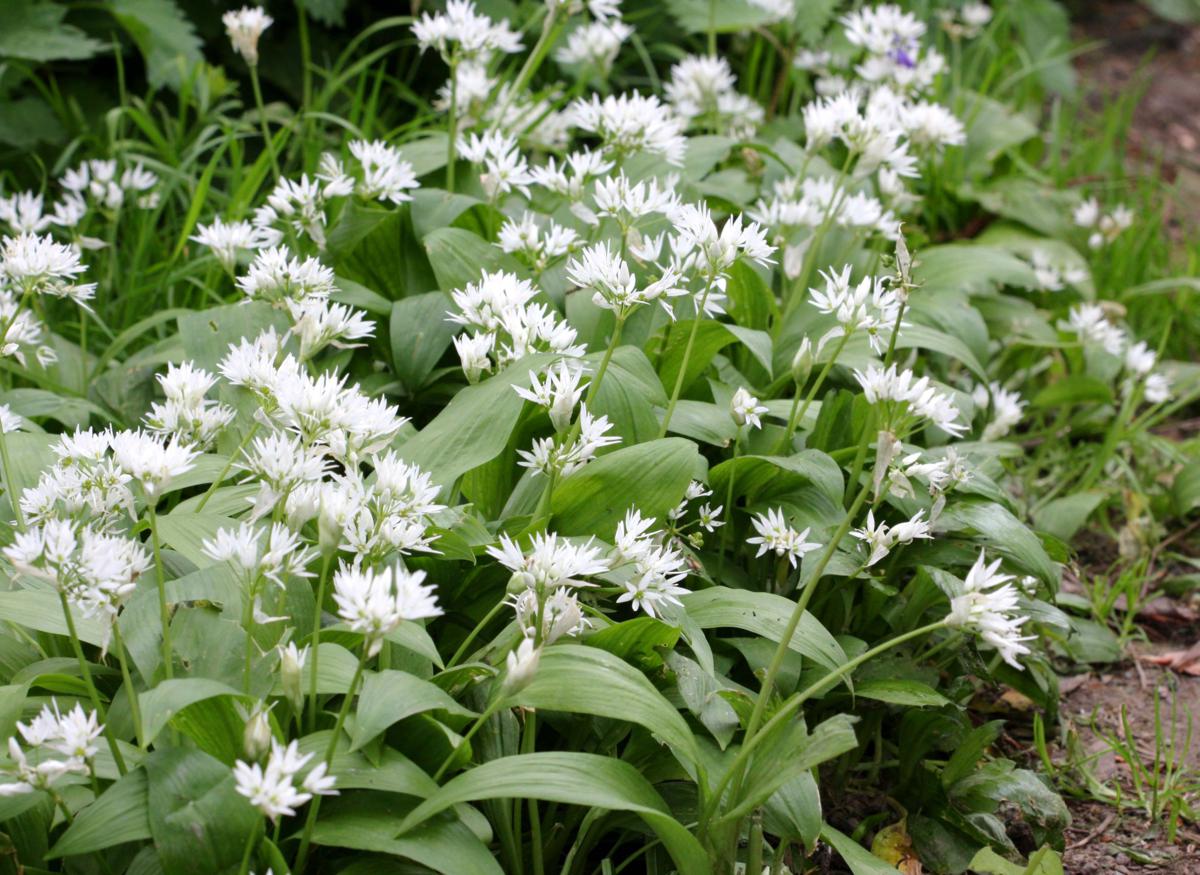
Ramsons, also known as wild garlic, are fascinating plants with a rich history and many uses. Found in damp woodlands across Europe and Asia, these leafy greens are more than just a forager's delight. Did you know that ramsons have been used for centuries in traditional medicine? Their strong garlicky aroma is unmistakable, and they can be a flavorful addition to various dishes. But what makes ramsons so special? From their health benefits to their role in ecosystems, there's a lot to learn about this humble plant. Let's dive into 15 intriguing facts about ramsons that might surprise you!
Key Takeaways:
- Ramsons, also known as wild garlic, are edible plants with medicinal properties. They thrive in damp, shaded woodlands and can be identified by their strong garlic scent and star-shaped white flowers.
- Ramsons can be used in cooking to make pesto, salads, and soups. They are best harvested in the spring and grow alongside other woodland plants like bluebells and ferns.
What Are Ramsons?
Ramsons, also known as wild garlic, are a type of wild plant found in woodlands across Europe and Asia. They have a strong garlic scent and are often used in cooking. Here are some fascinating facts about this unique plant.
-
Scientific Name: The scientific name for ramsons is Allium ursinum. The name "ursinum" comes from the Latin word for bear, as bears are known to eat the bulbs after hibernation.
-
Edible Parts: Every part of the ramsons plant is edible, including the leaves, flowers, and bulbs. The leaves are often used in salads, soups, and pesto.
-
Medicinal Uses: Historically, ramsons have been used for their medicinal properties. They are believed to help with digestion, lower blood pressure, and have antibacterial effects.
-
Seasonal Availability: Ramsons are typically available from late winter to early summer. The best time to harvest them is in the spring when the leaves are tender.
Where Do Ramsons Grow?
Ramsons thrive in specific environments. Understanding their habitat can help you locate and identify them in the wild.
-
Preferred Habitat: Ramsons prefer damp, shaded woodlands. They are often found in deciduous forests where the soil is rich and moist.
-
Geographical Range: These plants are native to Europe and Asia but can also be found in parts of North America. They grow abundantly in the UK, Germany, and Scandinavia.
-
Soil Requirements: Ramsons grow best in slightly acidic to neutral soil. They thrive in loamy or clay soils that retain moisture well.
-
Companion Plants: Ramsons often grow alongside other woodland plants like bluebells, wood anemones, and ferns. This can make them easier to spot in the wild.
How to Identify Ramsons
Identifying ramsons correctly is crucial, as they can be easily confused with other plants.
-
Leaf Shape: Ramsons have broad, lance-shaped leaves that are bright green and smooth. The leaves grow directly from the base of the plant.
-
Flower Appearance: The flowers of ramsons are small, white, and star-shaped. They grow in clusters on a single stem, usually blooming in late spring.
-
Scent: One of the most distinctive features of ramsons is their strong garlic smell. Crushing a leaf between your fingers will release this unmistakable scent.
-
Bulb Characteristics: The bulbs of ramsons are small and white, similar to those of cultivated garlic but much smaller. They grow just below the surface of the soil.
Culinary Uses of Ramsons
Ramsons are not just a wild plant; they are a culinary delight. Here are some ways they can be used in cooking.
-
Pesto: Ramsons leaves can be blended with nuts, cheese, and olive oil to make a delicious pesto. This can be used as a pasta sauce or spread.
-
Salads: Fresh ramsons leaves add a garlicky flavor to salads. They can be used in place of spinach or lettuce for a unique twist.
-
Soups and Stews: Adding ramsons to soups and stews can enhance the flavor. They pair well with potatoes, leeks, and other root vegetables.
The Final Word on Ramsons
Ramsons, also known as wild garlic, offer a fascinating glimpse into nature's pantry. These leafy greens aren't just tasty; they're packed with vitamins and minerals. From their medicinal properties to their role in culinary traditions, ramsons have a rich history. They thrive in damp woodlands and are easily recognizable by their distinctive smell. Whether you're foraging for a fresh addition to your salad or exploring natural remedies, ramsons are a versatile plant worth knowing. Just remember, always forage responsibly and ensure you're picking the right plant. Misidentification can lead to unpleasant or even dangerous consequences. So, next time you're out in the woods, keep an eye (and nose) out for these remarkable plants. Happy foraging!
Frequently Asked Questions
Was this page helpful?
Our commitment to delivering trustworthy and engaging content is at the heart of what we do. Each fact on our site is contributed by real users like you, bringing a wealth of diverse insights and information. To ensure the highest standards of accuracy and reliability, our dedicated editors meticulously review each submission. This process guarantees that the facts we share are not only fascinating but also credible. Trust in our commitment to quality and authenticity as you explore and learn with us.


